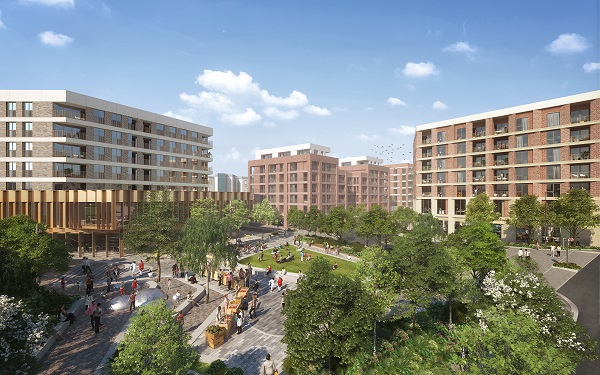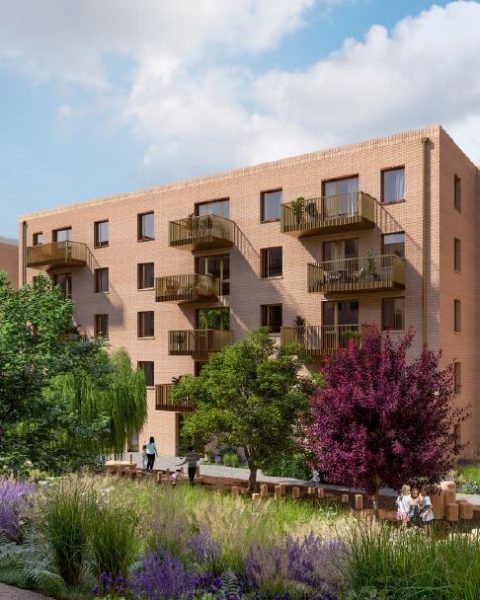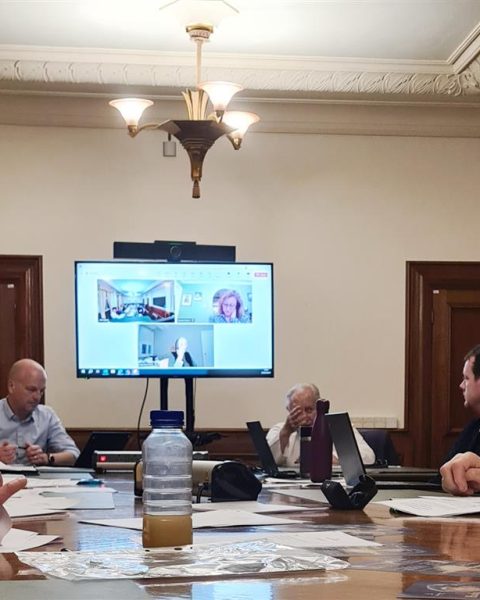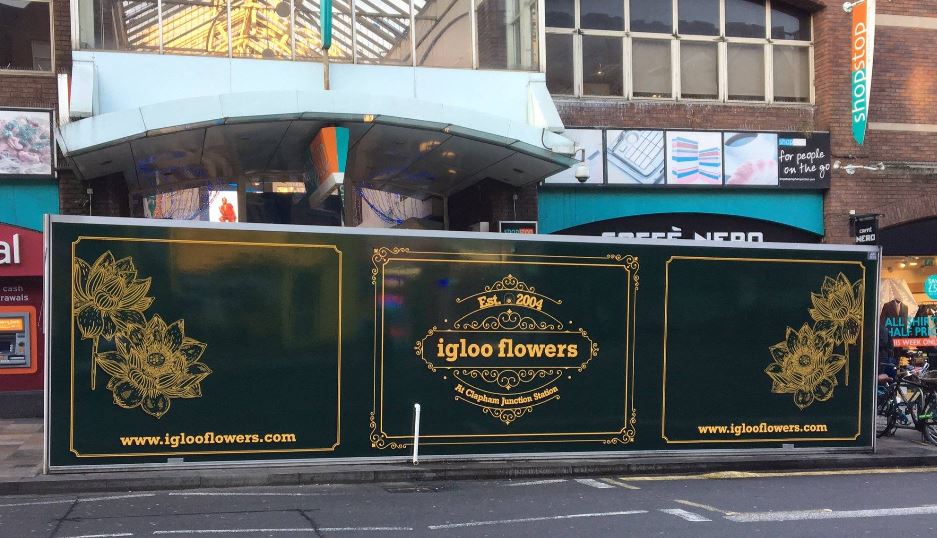Back in January 2022, Wandsworth Council was given the green light from the Mayor of London for the Alton Estate regeneration project in Roehampton, SW15. It means that he authorised the London Borough of Wandsworth to determine the planning application itself. The Council’s own planning committee approved their scheme for more than 1,108 new homes in October 2020, with all Labour councillors but one (Labour Councillor Gilbert for Roehampton and Putney Heath) joining votes to support the Conservatives plan.
The masterplan proposes demolishing and rebuilding 158 social rented homes and 130 privately rented units and adding just over 800 further new homes.
The Council is committed to carry on with the project, depite the withdrawal of their chosen partner, developers Redrow in August 2020. Redrow decided to exit from developments in the capital, citing increasing costs and the challenges and delays to the two-tier planning system in London. So far, all search from the Council for a replacing partner have failed.
However, before to pull out, Redrow still managed to complete the scheme on Bessborough Road, with 10 new homes were completed at McKinney House in September 2021, and a further 14 new council homes should be delivered later at Fontley Way.
A very controversial plan in breach of many planning policies
The plan has raised profound concerns from a number of parties since the beginning in 2012.
In July 2019, the Putney Society sent particularly strong objection to the masterplan planning application 2019/2516.
They highlighted the environmental cost of the demolition and construction,ignoring the Climate Emergency. The Society said that “the starting premise of ‘regeneration’ that the existing buildings are unfit is unproven” and that the main problem is the lack of maintenance by the Council that has let the buildings degrade to justify their demolition.
They also highlight the very poor transport connection of the estate that is in contravention with London Plan Policy 3.7 A saying “Proposals for large residential developments […] are encouraged in areas of high public transport accessibility”. As the scheme proposes less than one car space for five or more adults, they conclude that the transport issue has simply been ignored.
In term of buidling homes for people who need them, it seems also a fail attempt. Out of the 800 new dwellings, only 53 will be classed as affordable (6.6% of the total) with 30 social units and 23 shared ownership. The Putney Society writes:
“23% affordable is not enough and fails to comply with policies IS5e and DMH8. If 33% is not possible on council owned land, how can you expect anyone to provide this?”
Last but not least, as we saw in many other schemes (the “new” Northcote Library is only replacing the current building being demolished to facilitate private development, or phase 0 of Winstanley and York estates redevelopment hosting a “new” church and school… but only to replace the facilities that they needed to destry for phase 1), the proposals include a new library, health centre and other facilities, but only to replace the demolition of everything already here.
A tick-box consultation, ignoring all comments made but the local community
But the sharpest objection is without doubt the way consultations have been organised. Wandsworth Council leader Ravi Govindia said:
“The scheme has been developed over six years with extensive consultation with the local community and locally elected councillors. People in the area have played a central role in helping to produce these plans and ensuring the regeneration meets their day-to-day needs.”
According to the Putney Society, this is only a lie. They said:
“Up to 2014 there were indeed several public consultations, providing lots of feedback, they did not seem to result in any changes to the scheme. The ‘Preferred Option’ of 2014 was then consolidated (with extra density) in the Roehampton SPD 2015 without further consultation. The current scheme, yet more dense than envisaged by the SPD (and thus not in conformity with policy in a way that would get a refusal elsewhere) was first seen at an exhibition in 2018. Today’s version seems to have taken note of none of the feedback from then or any other stage. Boxes have been ticked, no-one has listened.”
- Read our article: The full case against Winstanley & York Rd scheme: social cleansing and contempt for local residents
The level of consultation was also a concern raised by Labour Councillor Gilbert during the October 2020 committee meeting. She drew attention to the petition collected by her colleague Labour Councillor Ambache which had been signed by over 500 residents asking for more from the scheme. Councillor Gilbert felt it was not enough for the Council, as applicant, to say “[we] need to build, so let’s do it here”, and that she could not support this scheme to residents. Councillor Gilbert queried the level of consultation pointing out that she had asked for a special meeting on the Master Plan for current residents. In her view there were too many small units and many current residents live in larger family units.
- Read our article: Winstanley regeneration: Can we trust the Council?
Just the year before the committee meeting, in August 2019, planning officers working for City Hall, issued strong concerns over the Alton Estate proposals in a Stage 1 report – including the level of affordable housing and the quality of consultation with residents that fed into the original proposals’ creation. They wrote:
“The proposals do not comply with London Plan Policy 3.14 and draft London Plan Policy H10 or the GPGER as the development would not deliver like for like replacement of social rented units; there are shortcomings in the consultation process; the decant strategy is significantly lacking in detail and does not take account of the impact of CPO [compulsory purchase order] process.”
The Mayor’s officers added:
“However, the [Statement of Community Involvement] has highlighted a number of shortcomings with the consultation process. No further public exhibitions on the scheme were held post September 2018, therefore, no consultation on the wider proposals took place within the circa 10 month period prior to submission other than targeted workshops.
[…] In summary, the scheme would not deliver like for like replacement of social rented units in terms of floorspace and does not reflect current housing need. The strategy for decant is extremely vague, does not clearly identify the impact of the CPO process on the strategy and consequently provides very little certainty for residents. No guarantee has been given that the temporary residents that would not have a right to rehousing on the estate would be rehoused in units provided at social rent or LAR levels. This approach therefore fundamentally conflicts with the principles of the GPGER, London Plan and draft London Plan policies and Affordable Housing and Viability SPG and is therefore unacceptable.”
A proposal criticised by residents and heritage experts
An additional criticism from the GLA was:
“The affordable housing is segregated in single tenure blocks on the periphery of the site, which is unacceptable and must be better integrated throughout the scheme.”
In the Architect’s Journal, Matthew Tiller, vice-chair of group Alton Regeneration Watch, confirmed that residents would be housed separately from the new private residents in two buildings ’at the edges of the demolition zone’. He said:
“The ‘new community’ will literally push the existing community to the margins”
The Architect’s Journal cited also several heritage experts, branding the scheme a “bad proposal“. Liverpool-based architectural historian Barnabas Calder said:
“The Alton – up to now – is complete, and of global importance. To destroy the core of the estate for largely market-rent housing represents a heartbreakingly short-sighted attack on the physical fabric and social purpose of one of the world’s most important groupings of Modernist housing.”
An alternative plan ignored by the Council
While Redrow pulled out from the project, a non-partisan group initiated by Alton Estate residents and local activists, named Alton Action, has fostered the creation of an alternative project for the redevelopment of the Alton Estate called People’s Plan. The took the idea form a similar proposal developed by the residents of Cressingham Gardens in Lambeth. They have partnered with The Bartlett School of Planning along with the Just Space network to co-produce the alternative plan.

They have presented in full the alternative project in a 155-pages document: it would be greener, with less demolition, more Council homes, less builky, quicker to achieve and less expensive with a £90m return on investment.
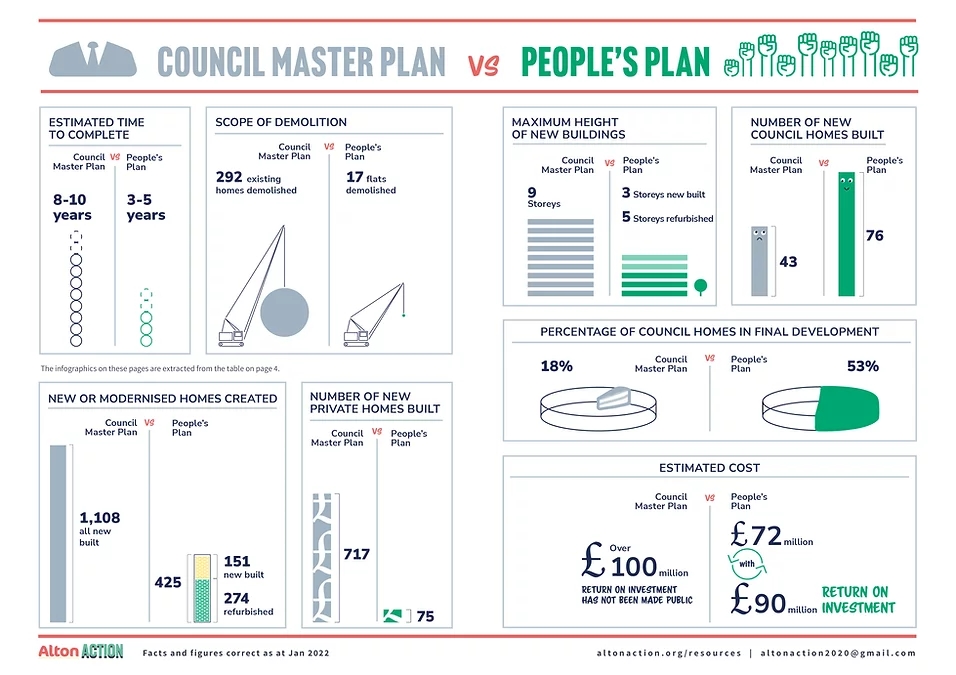
So far the Council has not expressed any interest and wish to engage seriously for any alternative proposal.
In their 2013 letter, the Putney Society wrote:
“Redevelopment and change in the area need to be gradual and in harmony with the established character and form of Alton West”.
As for Winstanley and York Estates, the Council seems to have chosen the much more brutal and short-sighed path.


